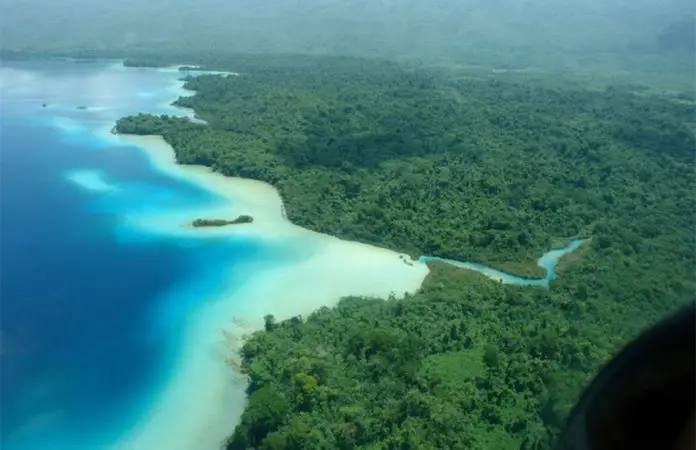The tourism industry in parts of the southern state of Chiapas is under threat from organized crime.
The director of the National Institute of Anthropology and History (INAH) has advised against visiting certain archaeological sites in the state due to security concerns, while a tourism operator said that travel agencies from three European countries have decided to not include visits to the Lacandon Jungle area in their itineraries.

The Jalisco New Generation Cartel and the Sinaloa Cartel — as well as local gangs affiliated with Mexico’s two most powerful criminal organizations — have been engaged in a turf war in the border region of Chiapas for close to three years. They are competing to control routes along which narcotics, weapons and migrants are transported north after entering the country from Guatemala.
INAH director Diego Prieto told the Latinus news website that tourists should not visit archaeological sites near the border with Guatemala such as Yaxchilán and Bonampak due to the risk of becoming a victim of violence.
Due to insecurity, boats that take tourists along the Usumacinta River to Yaxchilán from the town of Frontera Corozal are not currently operating, he said.
“At INAH we suggest that you don’t go [to the border region of Chiapas] so you don’t have an unfortunate experience,” Prieto said.
Earlier this week, the tourism company Anfitriones Turísticos de Chiapas (ATC) said in a Facebook post that “the tourism environment has been drastically disrupted” in some parts of Chiapas for more than three months.
As a result of “situations” that recently occurred with three groups of French tourists, “French, British and Belgian [travel] agencies that we represent have decided to not continue taking tourists to the entire Lacandon area,” ATC said.
The company said it had agreed to “reprogram” tours that included visits to the Lacandon Jungle, an area of great biodiversity and beauty that is rich in Maya history.
ATC’s post began with an alarming remark: “Chiapas tourism goes bust. Adiós Yaxchilán, adiós Bonampak.”

“… When your drivers and guides come across a blockade with native people who cover their face, you know you can negotiate your passage or use alternate routes. But when your vehicle with foreign tourists has to go through stone attacks and shootouts and you realize that native Lacandon and Ch’ol people have the offensive force to take on the Mexican army and the National Guard, you openly say Chiapas has gone to shit,” the bluntly-worded post said.
The company also said that armed men are in control of Bonampak, a claim with which cultural journalist Adriana Malvido agrees.
“There are archaeological sites in Chiapas of which INAH has lost control,” she wrote in an article published in the El Universal newspaper on Wednesday.
“The insecurity, the incursion of organized crime, the violence and the fear that run through the state from the Sierra Madre to the Lacandon Jungle and to San Cristóbal de las Casas has reached Yaxchilán and Bonampak, where archaeologists and restorers haven’t been able to enter for over a year,” Malvido wrote.
The presence of crime groups in the border region of Chiapas and the associated violence has caused large numbers of residents to flee, while the Fray Bartolomé de las Casas Human Rights Center and others have highlighted cases of forced recruitment of locals by criminal organizations.
Isaín Mandujano, a journalist in Chiapas, said last September that cartel violence has caused the displacement of thousands of border region residents since 2021 as well as the deaths and disappearances of hundreds of citizens, including “a lot of innocent people.”
Both the army and the National Guard have a presence in the region but “do nothing to stop the violence,” he said.
With reports from Latinus, Sin Embargo and El Universal
